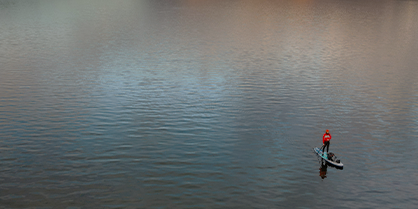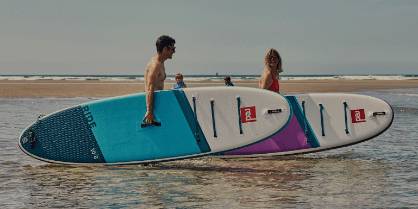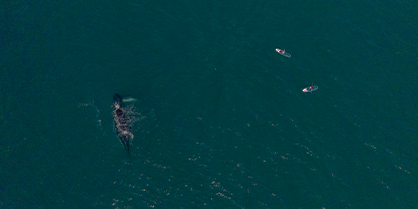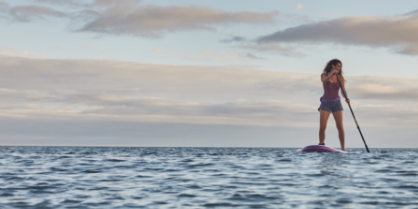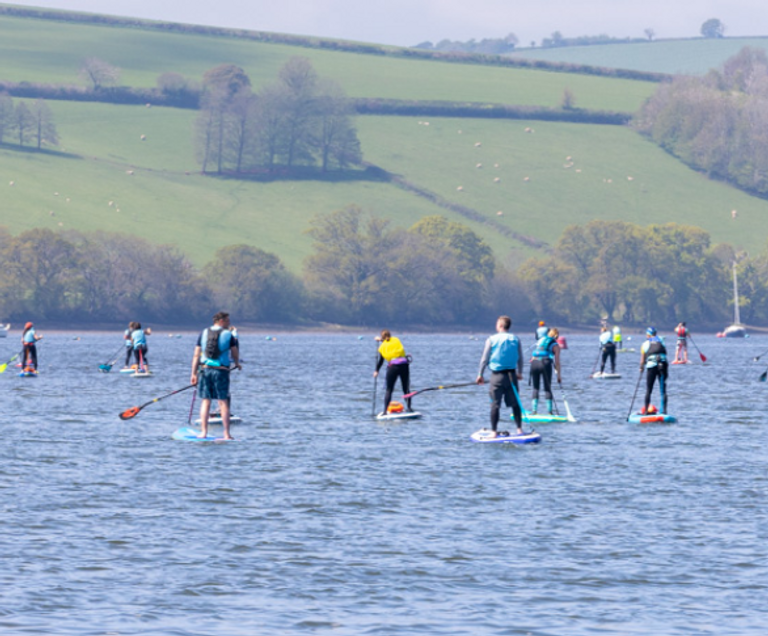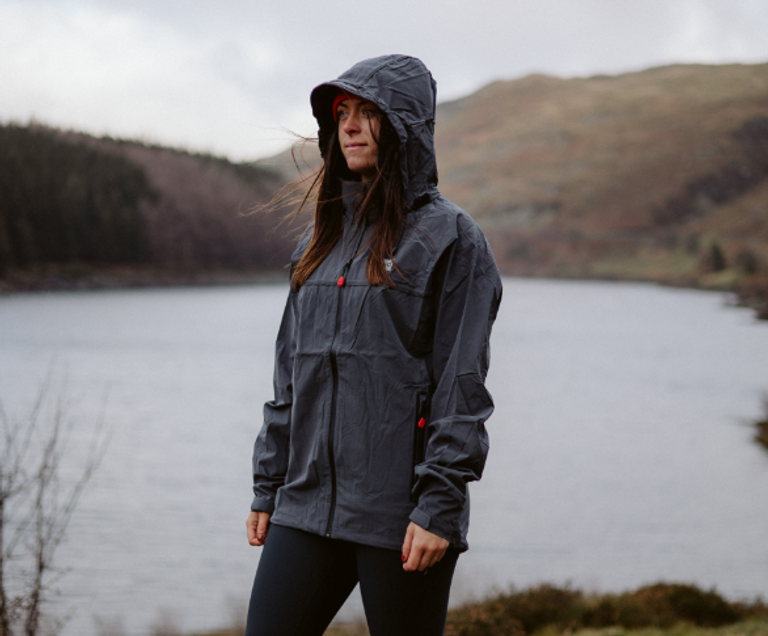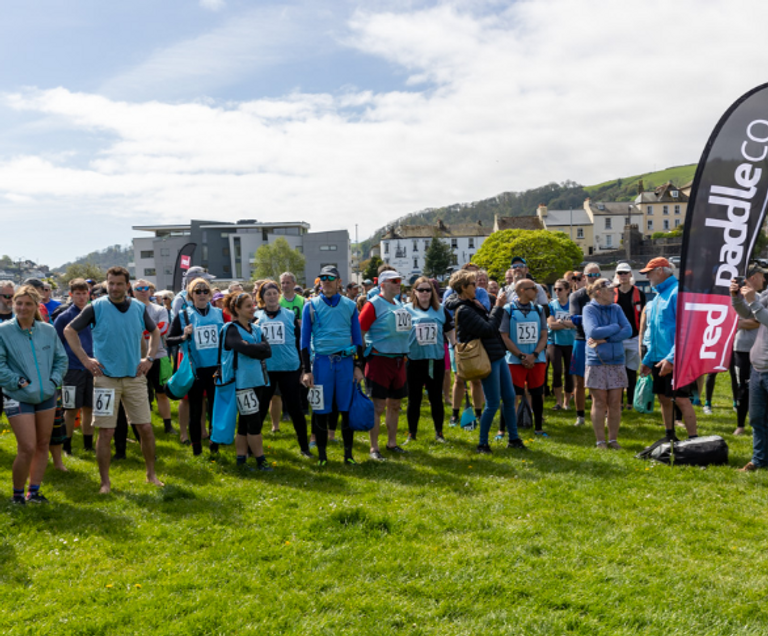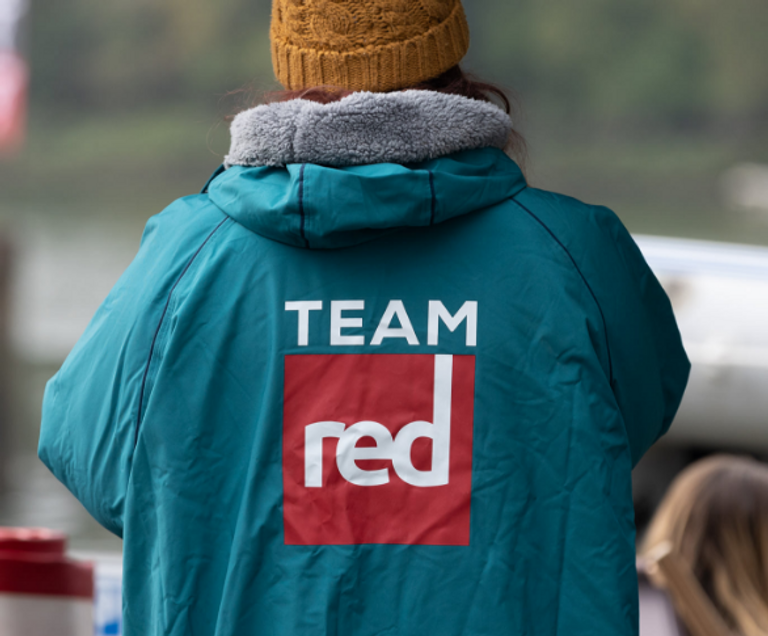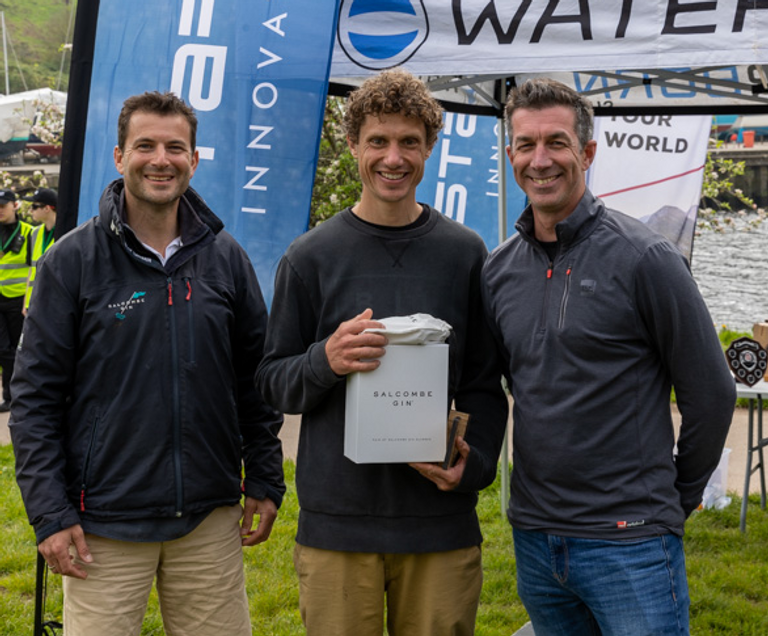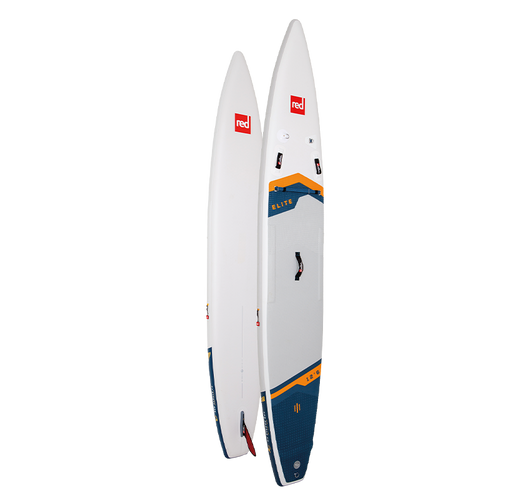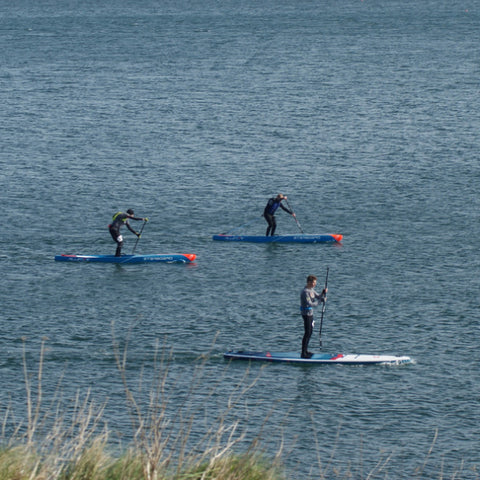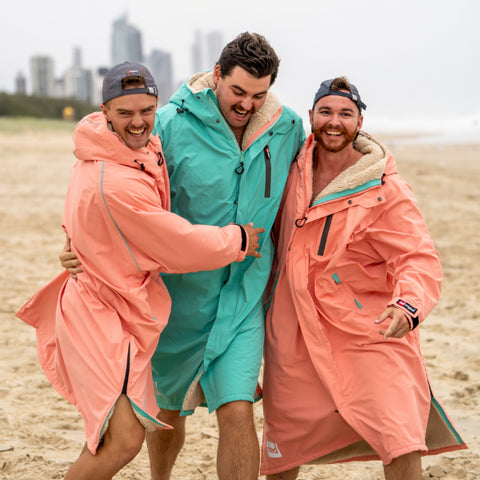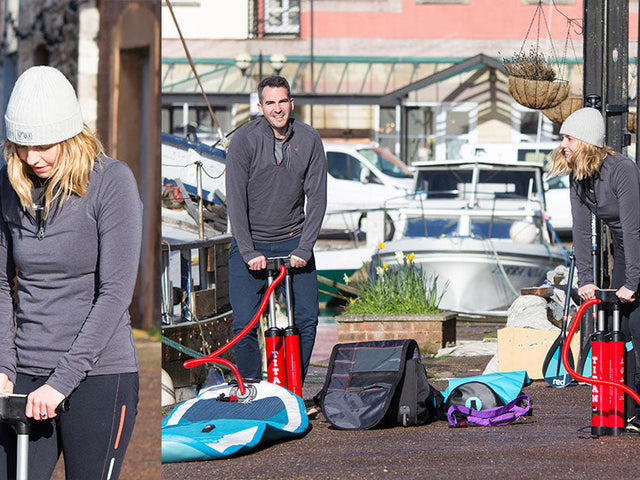
The Head of the Dart SUP Challenge is a true classic, one of the longest-established British paddleboard races. Every April over 250 stand-up paddlers gather in South Devon for the UK’s biggest SUP event, racing 14km up or down the River Dart. Brilliantly organised with classes for everyone, if you’re ready to upgrade your adventure it’s a rightfully popular challenge to take on.
Red racer Duncan Slater won the Head of the Dart 12'6" class overall in 2019 on a Red Elite inflatable (against the hardboards), then came back from Essex with his fellow SUPsect school instructors to win the Dragon class in 2022. Here’s his advice on how to prepare for the Head of the Dart SUP Challenge.
Are You Ready?
The Head of the Dart (HotD) attracts a full range of participants, from intermediate paddlers in a very healthy Leisure Fleet to experienced top-end racers in the 12'6" and 14'0" Race Fleets. Although on relatively flat, sheltered waters, the estuary is prone to a fair bit of chop in places and 14k is quite a distance, so it’s not a challenge to be taken on lightly. You’ll need solid SUP skills and a decent level of fitness.
The HotD Ethos page sums it up nicely. Regarding inclusivity, they “want to make the event open to as many as possible” but they do ask that everyone is “able to paddle unaided for 14km in choppy conditions, within 3 hours”, adding that a winter of training or coaching would be ideal preparation (find out how best to do that in our How To: Train for a Long-Distance SUP Race blog). See more on the HotD Paddler Suitability page.
Race Overview
The Head of the Dart SUP challenge mirrors a rowing race dating back over half a century. Pioneered for paddleboarding back in the early days of our sport by a few local South Devon paddlers – including Red founder and CEO, John Hibbard – it soon became a popular fixture on the British racing calendar and is now a true classic.
Every year the planned 14km course direction alternates, either from Totnes to Dartmouth or Dartmouth to Totnes along the tidal River Dart. Each year’s route will always be with the tide – either flooding to help paddlers upriver from Dartmouth, or ebbing to take them downriver from Totnes. In 2024 the route is planned to be Totnes-Dartmouth: every year you can find out which direction via the HotD site. In case of extreme weather (such as wind) the organisers are usually able to adapt to a slightly shortened, sheltered course that starts and finishes in Totnes. If this happens, you’ll be kept well informed in the days approaching the event.
Planning
Even with 250 spaces available, you’ll need to plan ahead just to secure a spot on the HotD startline as registration fills up fast. In 2024, the event was full in less than two hours, although there’s a waiting list you can join for a second chance when a few spaces inevitably free up later. Each year’s dates and registration tend to be announced in mid-winter, with entries opening in early February – stay up to date via the HotD website and @headofthedartSUP on Facebook.
Once you’ve secured your place, if you’re coming from far afield – and plenty do – you might want to book some accommodation and make a weekend of it. There’s plenty of camping, hotels and B&Bs around; check out the HotD Visiting South Devon page for some links.
Talking of travelling, everyone’s mileage to the event is asked for during registration so mangrove trees can be planted to carbon offset the event’s footprint – read more on the HotD Sustainability page.
Training
Training for the Head of the Dart is pretty much the same as any other SUP distance race. Specifically for HotD, it’s really useful to do at least a few sessions on tidal estuaries in order to mimic likely conditions and feel most at ease on race day itself. Otherwise, just give yourself time to work on technique before building up your speed and, if necessary, distance. And don’t forget the adage: ‘race how you train, train how you race’. So use your training as an opportunity to get completely used to the kit, clothing, hydration etc you’re planning to use on race day…
What Kit?
Red Paddle Co boards are rightly popular at HotD. From Sports and Voyagers in the leisure fleets to Elites in the main fleets, Red paddleboards have taken plenty of wins and podium places across classes over the years. As with any distance race, you’ll appreciate a good quality lightweight paddle too – we’d recommend Prime Lightweight Paddles or our super-efficient Ultimate Ultra Lightweight Paddles.
Since 2022, Quick-Release Waist Leashes and Buoyancy Aids or Waistbelt PFDs are compulsory at HotD, so don’t leave getting those to the last minute – and definitely make sure you’ve got used to wearing them in training so there are no surprises on race day.
Food & Drink
Although nutrition shouldn’t be a factor at this distance (just make sure you’ve eaten properly the night and morning) it’s worth packing some emergency snacks or sugar boosts in case you suffer a big dip in energy.
Hydration is certainly useful over this sort of distance though – and most racers will wear a hydration pack so they can drink without having to stop paddling. As always though, make sure you’ve got used to using it in training.
The key to both nutrition and hydration is to start thinking about it the previous day, if not earlier, and make sure you’re fully fuelled up and well hydrated in the 24 hours approaching the race itself. Afterwards, HotD is such a well-run event that refreshments are easily available at the event site.
Clothing
What to wear for this SUP challenge can be tricky. April is still early in the season, so although the water’s warmed up a bit it’s still relatively chilly, while the air temperatures could be anything from freezing cold to roasting hot! Whether or not you choose to include a core layer of neoprene (like a wetsuit, long-johns or leggings or a vest) and footwear is completely up to you. Most paddlers dress in layers such as our Performance Clothing to regulate their temperature and stay comfortable while paddling hard on the course.
Logistics
While taking on a point-to-point race might initially seem intimidating in terms of logistics, Head of the Dart is such a well-run, well-stewarded event that everything tends to run smoothly once you’ve decided what to do. As long as you properly read the Paddler Information Pack that you’ll be emailed in the weeks approaching, work out your plan, and give yourself plenty of time, it needn’t be stressful.
On the day itself, for 2024 registration has moved to the finish. Alternatively, pre-registration has always been available at Red HQ the afternoon before the race, but for 2024 that’s moved to Red @ the Beach, Blackpool Sands. One way or the other, you must register in person to collect your bib number.
Race day transport is of course key. The easiest way is to have your very own support crew, who can drop you off and pick you up at the start and finish. Otherwise, buddying up with another racer and leaving a vehicle at each end is a popular method. Or with stewarded board drop-off available from early in the day, and a shuttle bus laid on (bookable with your entry) many now drop their boards at the start, leave their vehicle at the finish, then jump onto the coach after registration…
The second compulsory attendance is the race briefing, where you’ll learn everything you need to know (about launching, timings, the start sequence etc) to happily make it onto the start line and take on the SUP challenge itself.
Don’t Forget to Look Up!
Once you’ve hit the water and started paddling, it’s all too easy to over-focus on the race itself, with tunnel vision as you chase down the board in front and keep clear of whoever’s behind you. But these challenges are supposed to be fun, and Head of the Dart is set amidst some beautiful scenery – so please don’t forget to look up, look around, take it all in, and enjoy…
See You There?
Head of the Dart being our local event, and as long-time sponsors, the Red team are always there in force – so do come and say hi!
For detailed event information, visit the Head of the Dart SUP Challenge website.
Photo credits to Head of the Dart.





